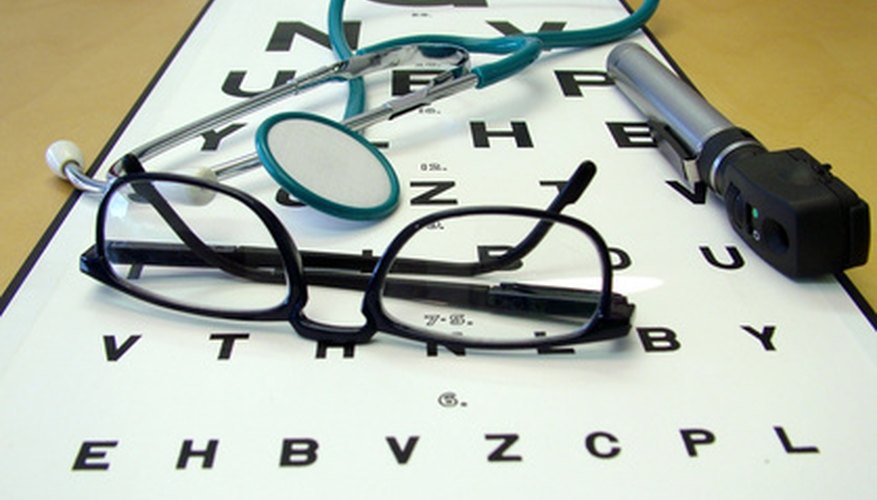The commonly used Snellen eye chart uses a series of letters of variable size to measure a person's visual acuity. The smallest row of letters a person can accurately read is used in combination with the distance the person is standing from the chart to compute her Snellen fraction, a measurement of vision (average vision is 20/20: a person can read the "20" row of letters while standing 20 feet from the chart.) The letters on a Snellen chart are a special, Snellen-specific type and size, but they can be rendered accurately using standard font points.
- The commonly used Snellen eye chart uses a series of letters of variable size to measure a person's visual acuity.
- The smallest row of letters a person can accurately read is used in combination with the distance the person is standing from the chart to compute her Snellen fraction, a measurement of vision (average vision is 20/20: a person can read the "20" row of letters while standing 20 feet from the chart.)
Use the following chart to obtain the font size (pt, or point) equivalents of the Snellen letters. The measurement in feet preceding the font size represents how close a person with average vision is expected to have to stand in order to make out the letters.
70 feet (152 pt)
60 feet (130 pt)
50 feet (108 pt)
40 feet (87 pt)
30 feet (65 pt)
20 feet (43 pt)
15 feet (33 pt)
10 feet (21 pt)
7 feet (15 pt)
4 feet (9 pt)
Use the "Courier New" font to most closely approximate the unique Snellen font. Note that even a correctly scaled Courier New chart is not wholly identical to a genuine Snellen chart, but it's the closest an easily made chart on a personal computer can get.
Use the utility linked in "Resources" to display Snellen letters on your computer screen scaled to exactly the right size.
